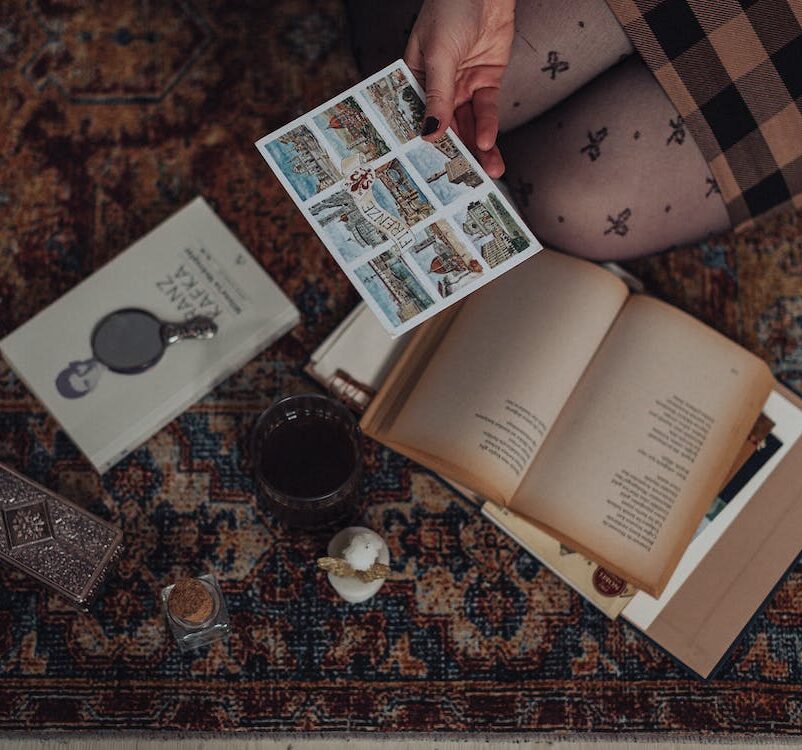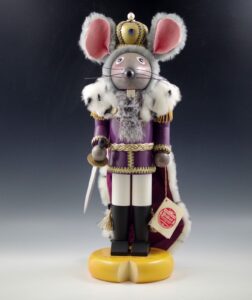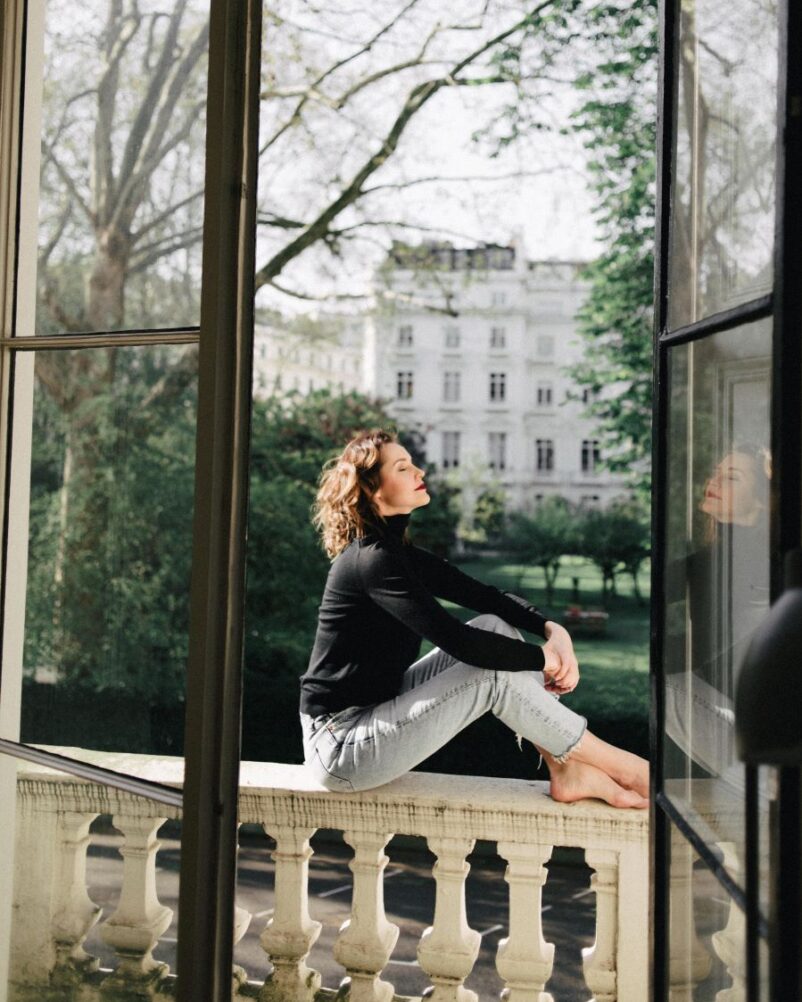
One of the most surprising trends among the younger generation is their lack of interest in traditional family heirlooms. Gone are the days when grandchildren eagerly awaited the inheritance of Grandma’s fine china set or Grandpa’s antique pocket watch. In today’s fast-paced, tech-savvy world, these once-cherished possessions hold little appeal for young adults.
Instead of bulky furniture such as dining room tables and china cabinets and all the treasures inside such as silver that must be polished, or delicate holiday ornaments and long-collected knick-knacks, young people are gravitating towards minimalist lifestyles and experience-based purchases. They prioritize mobility and convenience over accumulating physical items that may tie them down. As a result, sentimental family heirlooms like old photo albums or hand-knitted blankets are often overlooked in favor of digital memories stored on smartphones or experiences captured through social media posts.
In a world where minimalism reigns supreme and the KonMari method has sparked joy for millions, the concept of family heirlooms seems to be losing its luster. Once cherished possessions that symbolized heritage and tradition, these sentimental treasures are now being met with indifference and even disdain by younger generations.
It appears that nobody wants the family heirlooms anymore. But why have these once-prized artifacts become so unwanted? And what does this shift in sentiment mean for the future of our cherished family heirlooms keepsakes?
The Burden of Family Heirlooms
The burden of family heirlooms weighs heavy on many households. While these items may hold sentimental value and serve as a connection to the past, they can also become a source of stress and responsibility. In a world where living spaces are shrinking and lifestyles are constantly evolving, the practicality of preserving and displaying these treasures becomes increasingly challenging.
For those not in the know on generation names, individuals born in 1901-1927 are referred to as “The Greatest Generation.” Those born between 1928-1945 are known as “The Silent Generation.” Many of the treasured family heirlooms have come from these two generations, and have mostly passed to the Baby Boomer Generation (born 1946-1964). And that’s where the proverbial buck stops. Because going forward, the Gen X’s, Millennials, Gen Zs, and the newest–Gen Alphas–simply seem to have little to no interest in family heirlooms.
Of course, there are exceptions and some younger people really DO want the keepsakes. However, overall, what was once cherished may now feel like a burden, as younger generations are often less interested in the traditional trinkets that have been passed down. The nostalgia surrounding these heirlooms fades as individuals prioritize minimalism and functionality in their lives. It begs the question: what do we do with all these artifacts from our ancestors?
And, sadly, when families find that nobody in the family wants the dining room set (many newer homes don’t even have formal dining areas), they try selling it, and then when that doesn’t work, they try and give it away. More and more charity organizations are even declining large-scale furniture and formal sets like dining areas and library areas, due to lack of interest and space. In a word: sad.
The Sentimental Value vs Practicality Debate of Family Heirlooms
In the age of minimalism and ever-changing lifestyles, it seems that sentimental value often loses its battle against practicality. While it may be difficult to part with family heirlooms or objects that hold emotional significance, many people find themselves pondering the rationale of keeping these items. The sentimental value vs. practicality debate becomes particularly apparent when considering the limitations and demands of modern living spaces.
 The sentimentality attached to family heirlooms is undeniably powerful. These objects carry memories and stories from generations past, connecting us to our roots and providing a sense of identity. However, as we navigate through increasingly smaller living spaces or nomadic lifestyles, the question arises: how much space should we allocate for these sentimental treasures?
The sentimentality attached to family heirlooms is undeniably powerful. These objects carry memories and stories from generations past, connecting us to our roots and providing a sense of identity. However, as we navigate through increasingly smaller living spaces or nomadic lifestyles, the question arises: how much space should we allocate for these sentimental treasures?
At some point, the accumulation of such items can become overwhelming and impractical in terms of storage space and convenience. And when boomers themselves are downsizing, the reality is that people don’t want to pay for expensive storage for the items to face an almost-certain future of donation … or trash.
There is also a growing recognition that sentimental value can reside within experiences rather than physical possessions. Holding onto an old piece of furniture or an ornate trinket often requires compromising on functionality and hindering our ability to adapt to changing circumstances. In a world where experiences are valued more than material possessions, the act of decluttering becomes liberating instead of sacrificial – it opens up opportunities for new adventures while creating space for memories-to-be-made rather than clinging onto those already formed.
Ultimately, striking a balance between sentimentality and practicality is crucial in today’s fast-paced world.
Changing Attitudes Toward Material Possessions
As society continues to evolve, so do our attitudes toward material possessions. Gone are the days when acquiring and accumulating objects was considered a measure of success or happiness. Instead, people are increasingly shifting their focus on experiences and meaningful connections. In this fast-paced world, where convenience and minimalism take precedence, many are finding themselves questioning the value and purpose of material possessions.
One reason for this shift in mindset is the desire for freedom and flexibility.  With advancements in technology allowing for remote work and travel opportunities, individuals are no longer tied down by physical belongings. Owning less means having the ability to move more freely and explore new opportunities without the burden of excess stuff weighing them down.
With advancements in technology allowing for remote work and travel opportunities, individuals are no longer tied down by physical belongings. Owning less means having the ability to move more freely and explore new opportunities without the burden of excess stuff weighing them down.
Additionally, changing attitudes toward material possessions can also be attributed to growing environmental concerns. With an increasing awareness of climate change and its impact on our planet, many people feel a moral obligation to reduce their consumption and minimize waste. This has led to a rise in sustainable living practices such as recycling, upcycling, and buying second-hand items instead of brand new ones.
As we continue to navigate these shifting perspectives on what truly brings us fulfillment, it is important to remember that true value lies not in our material possessions but rather in the relationships we cultivate and the memories we create along life’s journey.
Decluttering and Minimalism Trends
In today’s fast-paced world, the trends of decluttering and minimalism have taken center stage. With busy lives and limited space, people are realizing the need to downsize and simplify their surroundings.
But why has this trend become so popular?
 One reason could be the desire for a sense of freedom and lightness that comes with having less stuff. In a culture that often equates happiness with material possessions, adopting a minimalist mindset allows individuals to focus on what truly matters in life.
One reason could be the desire for a sense of freedom and lightness that comes with having less stuff. In a culture that often equates happiness with material possessions, adopting a minimalist mindset allows individuals to focus on what truly matters in life.
Furthermore, decluttering is not just about getting rid of physical belongings; it’s also about clearing mental clutter. Numerous studies have shown the correlation between an organized living space and improved mental well-being. By eliminating excess items that hold no meaning or purpose, we create room for clarity and calmness in our minds. In a world filled with constant distractions and noise, minimalism offers solace by providing us with an environment that supports our overall mental health.
The rising popularity of decluttering and minimalism isn’t just a passing fad – it’s a reflection of our changing priorities as a society. As we become more conscious of our environmental impact, the idea of consuming less and repurposing what we already have becomes increasingly attractive. Additionally, millennials who value experiences over material possessions are embracing these trends as they seek meaningful connections beyond tangible objects.
Lack of Interest in Traditional Items
So why is there such a lack of interest of material goods from the past?
One possible explanation for this shift in attitude could be attributed to our digitally driven society. With the rise of social media platforms like Instagram and TikTok, people now have access to a seemingly infinite amount of experiences and information at their fingertips. Why hold onto a dusty relic from a bygone era when you can explore new cultures through stunning travel photography or learn about different eras through captivating YouTube documentaries?
It appears that our desire for novelty and constant stimulation has left little room for sentimentality. And, it doesn’t really matter how we (the older generation) feel about all this. What matters is that the younger generations are telling us loud and clear that they really don’t want these things, if we only really listen. Most of the time, our children and even grandchildren may not want to hurt our feelings, so avoid telling us.
Furthermore, another factor contributing to the lack of interest in traditional items may be attributed to changing lifestyles. As households become smaller and living spaces more compact, people simply don’t have the physical space to display or store large antique furniture pieces or ornate collectibles. In addition, home styles now showcase changing aesthetics: Modern design trends lean towards clean lines and simplicity rather than ornate details found in older pieces.
Where previous generations appreciated heavy oak furniture and intricate patterns, millennials are more inclined towards sleek, multifunctional pieces that fit seamlessly into smaller living spaces. Practicality seems to outweigh sentimentality as modern life demands efficiency and functionality over decorative relics from days gone by.
Younger families have to consider whether they want to display a large-scale grandfather clock or use the space for a bookshelf for their children’s books and homework. Often, the older pieces are mammoth in scale and don’t really work in scaled homes or ones that have eliminated spaces where in the past these treasures may have prevailed (when is the last time you’ve seen a new home with a separate formal living room, a large library, or sitting area)?
Is there still value in preserving history through objects passed down from generation to generation? Or are we witnessing an inevitable shift towards a more transient society where investment is placed on experiences rather than material possessions?
While this new perspective might be disheartening for those hoping to pass down treasured heirlooms, it does not necessarily mean an end to family legacies altogether. Instead of fixating on material possessions, perhaps we can focus on creating lasting memories and fostering meaningful connections with our loved ones – gifts that will truly stand the test of time.
The Digital Age and Its Impact on Heirlooms
In the digital age, the concept of heirlooms is changing. While physical possessions have long held sentimental value and been passed down through generations, today’s generation is more inclined towards digital memories. As photos, videos, and even personal journals become digitized and stored on hard drives or cloud services, the notion of tangible heirlooms seems to be fading away.
These digital manifestations of memories offer a multitude of advantages over physical objects. They are easily accessible from anywhere in the world with an internet connection, they can be easily shared with family members or friends instantly, and they can be preserved indefinitely without succumbing to wear and tear.
However, it raises an important question: what does this mean for future generations? Will they miss out on the experience of holding their great-grandparents’ wedding photo album in their hands? The answer seems to be, not really.
As technology advances at an ever-increasing pace, there is a concern that these digital heirlooms could become obsolete or inaccessible in the future. Formats change rapidly; floppy disks gave way to CDs which were then replaced by USB drives, and now cloud storage dominates the scene. The risk of losing access to cherished memories due to outdated hardware or software is a genuine fear that haunts many individuals contemplating their digital inheritance.
The reality is that it is crucial for aging Americans to reevaluate the significance of family heirlooms in our lives. While it might be true that these objects no longer hold the same value as they once did, there is still inherent worth in preserving and passing down these artifacts from one generation to another. Family heirlooms not only connect us to our past but also provide a sense of identity and belonging.
Family heirlooms serve as tangible reminders of our ancestors’ experiences, struggles, and triumphs. They carry with them stories that transcend time, shedding light on the history and culture of our family lineage. By treasuring these items and cherishing their sentimental value, we are keeping alive a piece of our heritage and ensuring that future generations will have a connection to their roots.
Ultimately, the true significance of family heirlooms lies not in their material worth but in the intangible bonds they create between individuals and across generations. They hold within them a shared history that cannot be replicated or replaced by any modern possession. So let us reconsider the importance of these treasures and appreciate them for the rich tapestry of memories they represent – because nobody wants to lose touch with their roots or forsake the stories that make us who we are today.
What Do We Do With These Family Heirlooms?
Here is a growing list of family keepsakes and treasures from past generations that the younger generations really don’t want.
What Younger Generations Typically Don’t Want
- Photo albums of memories (many generations have boxes and bins of photographs)
- Mammoth furniture of intricate carvings and may not be practical in today’s world
- Grandfather clocks
- Dining sets
- Oak anything (for the most part)
- Formal china place settings
- Tea service
- Silver pieces like platters, pitchers, and silverware sets
- Glassware and crystal
- Knick-knacks and most collectibles (Precious Moments, for example)
- Older beds and certainly not the mattresses that came with them
- Fragile pieces that would not survive moves or children
- Quilts, Afghans, and other hand-crafted items
- Artwork prints unless highly sentimental or unique in some way
- Antiques (many are found to be interesting but there is simply no room to display or store, such as an old Singer sewing machine)
- Old, upholstered furniture of most any kind
- A wedding gown (sometimes individuals use a portion of lace or material and add it to their own, but most younger people don’t choose to wear a parent’s or grandparent’s wedding gown)
Items That Younger Generations MIGHT Want
- A few photo memories that are carefully chosen to keep the connection between generations (they would happily accept a collection of digital photos put together in a viewable format for memories but typically don’t want to do the work themselves)
- A couple of small pieces that can be easily displayed
- Specialty or novelty antiques
- An item that evokes a special memory or sentimental feeling, even though the monetary value may be low
- A small item that showcases a talent by an ancestor (carving, painting, etc.)
What We Should Do Now With Our Family Heirlooms
If you’ve had your reality check and realize all the sentimental items you’ve been collecting from your own families through the years may not be passed along to the younger generations, what do you do?
If possible, at your next family get-together, ask everyone to provide you with an honest and earnest talk about any items they may want. And, if possible, when items are agreed to, see if they can begin taking them now. One of the biggest mistakes that people often make is the “out of sight, out of mind” approach. All those boxes and bins that are stored and keepsakes that are wrapped up and tucked away, may not be viewed or considered until after your own passing.
It’s not really the best approach to say that your kids and grandkids can face the task of deciding the fate of family heirlooms, because in all honesty, many of them will ultimately be donated or even thrown away.
By having the heart-to-heart conversations while you are still alive, you’ll be able to take time with family members to share tales of how an object was acquired or its significance within the family. By doing so adds depth and meaning, not only for us, but also for future generations. By personalizing the history and emotional worth to the younger generations, some of the items you most cherish can be passed on.
Our Family Heirlooms Journey
Both Rick and I are boomers from families that collected and kept just about everything. In part, the reasons were that money was tight when they were growing up and if a purchase was able to be made, then by keeping it, their thinking was that it could later be passed on or useful it was ever again needed. In addition, both sides were highly practical.
In some ways, that inability to donate or pass on unused items grew almost to the point of hoarding in some cases. I remember when my father was still alive and my brother and I were trying to clean up some of the unused and truly unwanted things in the garage he was keeping ‘just in case,” he growled at us: “Don’t touch my stuff!” So, we didn’t.
But that also meant that went our beloved parents passed, we were tasked with going through an enormous amount of things, which included not only true family heirlooms but boxes upon boxes of “stuff” that had no value or forever unknown reasons it was kept at all.
We poured through records they kept from their early beginnings (many of which photocopies were made again and then again so they were sure to have that receipt from 1957), newspaper clippings of events that happened that week from an era long past, and old magazines, coffee cups and freebies from hotel stays.
The list goes on and on and there were so many items we ultimately decided to discard (such as folded paper napkins from 30 years ago or more without explanation or imprinting, for example).
Also, while our families of the past may have carefully stored items with great care and love, in our cases the elements weren’t kind. We live in Texas, and storing items in hot attics or uncooled units for generations had reduced many of the contents into melted piles of goo or broken remnants of what once was. We also dealt with rat droppings, melted candles (yes, my mother carefully wrapped up, and then forgot about, candles), and broken thingamabobs. In truth, it was heartbreaking.
As many of the contents have now made their way to our home and that of our siblings, the same questions remain. Are we simply postponing the inevitable? And as these things have passed to another generation, it now becomes our joy, honor, and burden, to figure out what to do.
 We did successfully pass on a legacy of love from my parents in a way that I hope will create endearing memories for all. My father had a large collection of Steinbach nutcrackers, and we did a drawing for them and presented everyone with one as a keepsake at Christmas one year. The nutcrackers were always adored by the children and a treasure my dad loved to show them every time they stopped in for a visit. Thanks to my brother’s great idea, I hope those family heirlooms will be forever enjoyed and maybe even passed on.
We did successfully pass on a legacy of love from my parents in a way that I hope will create endearing memories for all. My father had a large collection of Steinbach nutcrackers, and we did a drawing for them and presented everyone with one as a keepsake at Christmas one year. The nutcrackers were always adored by the children and a treasure my dad loved to show them every time they stopped in for a visit. Thanks to my brother’s great idea, I hope those family heirlooms will be forever enjoyed and maybe even passed on.
Currently, however, none of our three kids are in position to take hand-offs of other treasures anytime soon. They are all still unsettled and currently finding life adventures as they present themselves. Two currently reside in Alaska. At least, as I tell myself often, their hearts are full of cherished memories and shared times with their grandparents, great grandmothers, and extended family.
And, I contemplate, isn’t that enough? Yes, I think it is.
Ready to Read More? Check Out These Topics
- When Family Obligations Collide: The World of the Sandwich Generation
- Ageism Examples: 1 in 2 People are Ageist Against Seniors
- Finding Love After 50: It’s Never Too Late for Romance
- The Art of Aging Gracefully: Simple Secrets Revealed
Thoughts on family heirlooms? Please share!
Written by
Robin McClure
Robin is the author of 7 parenting books and has 3 grown children, 3 spoiled rescue dogs, and a very understanding husband. She holds a bachelor's degree in journalism and a master's degree in communications, and spends her time writing, drinking coffee, and planning the next grand adventure.



